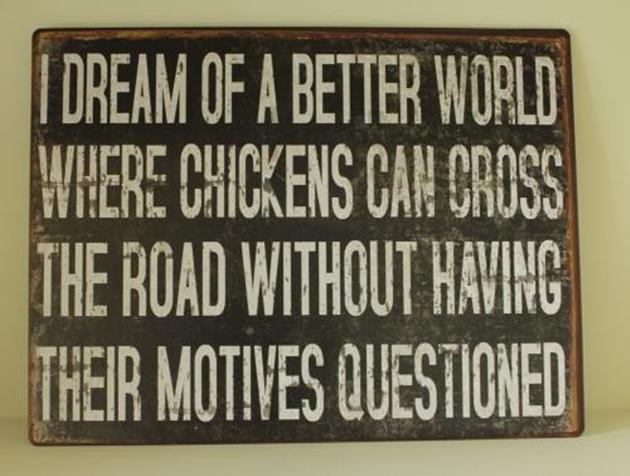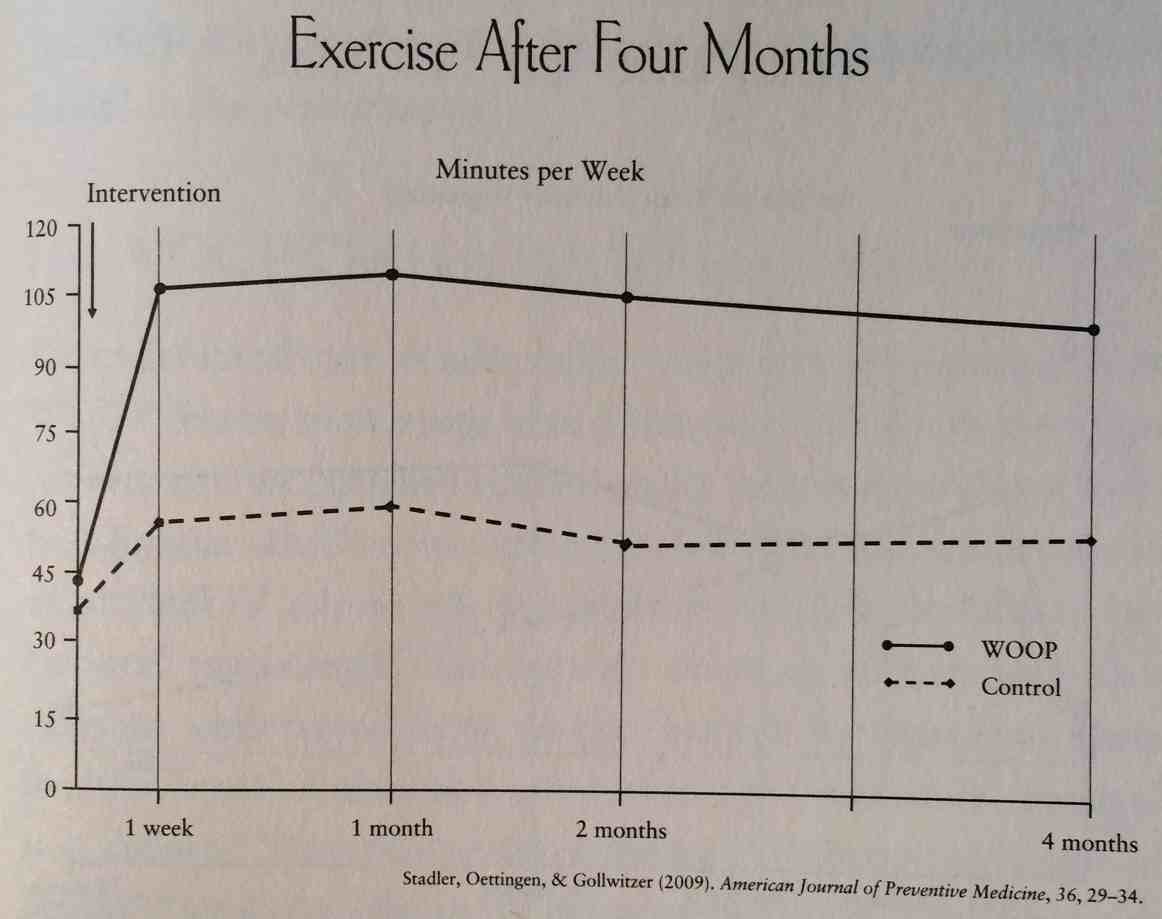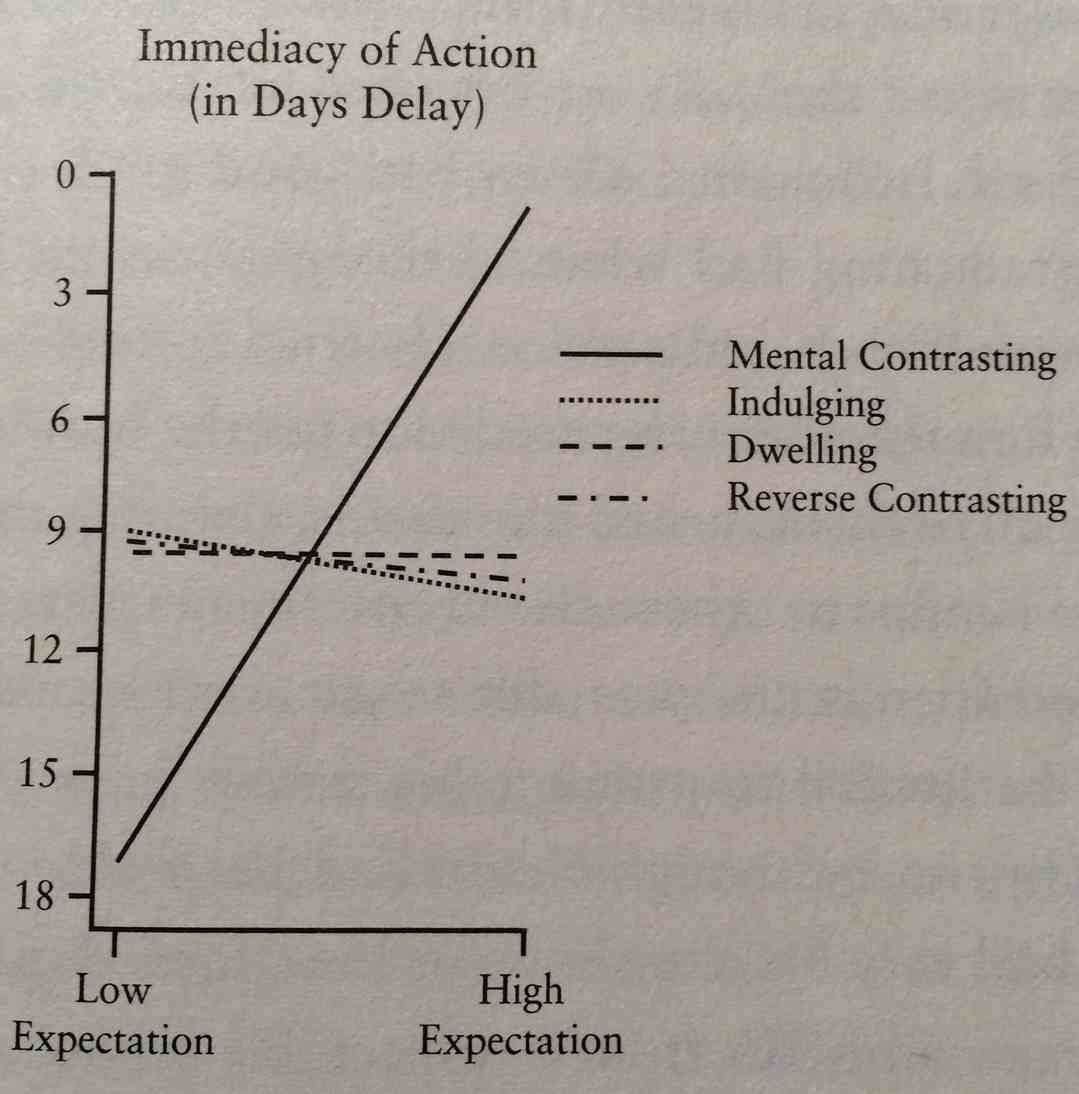How To Go From Dreaming To Doing: 4 Steps To Motivation
.
You have stuff you know you should be doing. But it doesn’t get done. You need to go from dreaming to doing — but it’s hard.
You want to accomplish more at work, hit the gym, get a new job or study harder at school… but it’s not happening.
I’ve talked about strategies to make challenges easier like the 20 second rule. But what if you’re just not starting in the first place?
What gets you going when you’re not motivated to reach those longer term goals?
There’s a solution that can help you not only make change easier, but boost motivation. What’s the secret?
WOOP.
Yes, WOOP. It’s an acronym for 4 steps to achieving any goal based on research by Gabriele Oettingen:
- Wish
- Outcome
- Obstacle
- Plan
Can a method with the silliest name in social science really work? Yeah.
People who say they want to exercise more and use the WOOP method do dramatically better:
How does it work? I’m here to break it down for you.
The first step is wishing. We’re all pretty good at that — but it’s only part of the solution. In fact, if you do it wrong it can actually make things worse.
Here’s how to do it right.
1) Wish (But Don’t Stop There)
Everything starts with a wish. But if that’s all you do, you’re in real trouble.
Having a positive attitude is pretty much essential because a negative attitude makes us more likely to quit — or to never start in the first place.
But when that positive outlook become fantasizing, things go south really fast. Yes, dreaming about success is bad.
Via Rethinking Positive Thinking: Inside the New Science of Motivation:
Again and again, much to my surprise at first, the results turned out to be the same. Positive fantasies, wishes, and dreams detached from an assessment of past experience didn’t translate into motivation to act toward a more energized, engaged life. It translated into the opposite.
Why? Derek Sivers has a great TED talk that explains it here.
Your emotional brain just can’t tell the difference between fantasy and reality.
When you fantasize, those older parts of your brain think you’ve actually achieved your goal. So rather than ramping up, motivation dials back:
Results indicate that one reason positive fantasies predict poor achievement is because they do not generate energy to pursue the desired future.
(Sorry, fans of “The Secret” — it just doesn’t work.)
Dreaming turns positive thinking into mere wishful thinking.
So if it doesn’t work, why in the world do we do it? Plain and simple: it feels good.
Just like stuffing your face or checking your email for the 216th time this hour, it feels great — but is counterproductive to long term achievement.
Via Rethinking Positive Thinking: Inside the New Science of Motivation:
Dreaming about a positive future seemed to protect against sadness in the short term but promote it over the long term. It coincided with a short-term hit of pleasure that ultimately wore off and predicted increased depression.
Want to lose weight? Those who merely wished “lost 24 fewer pounds less than those who pictured themselves more negatively.”
Want to meet that special someone? “The more students…indulged in positive fantasies…the less likely they reported initiating the relationship.”
Trying to get a new job? “The more frequently students had experienced positive fantasies, the less success they had.”
(For more on how to motivate yourself, click here.)
Okay, so wishing by itself can be very bad. What did the research say the missing pieces were?
2) See A Specific Outcome
This part isn’t hard. Oettingen‘s work says you need to take your wish and crystalize it. Be specific.
So if “more money” is your wish, the desired outcome might be “get a raise at work.”
Wishing for better work-life balance? Your outcome could be “No work on weekends. Ever.”
(For more on setting goals, click here.)
So your wish is now clear. But this is when things get trickier. It’s time to go negative.
3) Envision Your Obstacles
Oettingen calls this “mental contrasting.” You need to deliberately think about the obstacles that might prevent you from achieving the outcome.
Now here’s what’s really fascinating: some people do this and get more motivated. But others end up less motivated afterward.
Does that mean this technique is less powerful? No, it means it’s truly awesome. Why?
The people who did not get a boost were the ones who realized their current goal was unrealistic.
Mental contrasting didn’t only motivate people — it also helped them realize which goals were actually worth pursuing.
When people looked at obstacles and realized they had a good chance of overcoming them (“I want to get a raise”), motivation increased.
Those who reviewed obstacles and realized their goals were unrealistic (“I want to be Prime Minister of Australia by Thursday”) reported less motivation.
The latter were dissuaded and didn’t waste their time. So outcomes for both groups that used mental contrasting were positive.
And this isn’t just egghead science — it lines up with ancient wisdom. The Stoics were saying it thousands of years ago.
(You never heard about it? Those guys are dead and don’t have a big social media presence. That’s why you have me.)
Ryan Holiday, author of the excellent book The Obstacle Is the Way explains the Stoic perspective:
…we look to envision what could go wrong, what will go wrong, in advance, before we start. Far too many ambitious undertakings fail for preventable reasons. Far too many people don’t have a backup plan because they refuse to consider something might not go exactly as they wish.
Today this technique not only helps CEO’s close deals, it saves lives.
Dan Coyle, the expert on expertise, says it’s an essential part of how US Special Forces prepare for every dangerous mission:
…they spend the entire morning going over every possible mistake or disaster that could happen during the mission. Every possible screwup is mercilessly examined, and linked to an appropriate response: if the helicopter crash-lands, we’ll do X. If we are dropped off at the wrong spot, we’ll do Y. If we are outnumbered, we’ll do Z.
(For more on the power of negative visualization to improve decision making, click here.)
So you’ve stared your obstacles in the face. There’s just one more step to getting what you want…
4) Make A Plan
Mental contrasting is so powerful because it juxtaposes wishes with reality. It stress-tests your desired outcome.
Questioning your wishes leads to insights about how to proceed in the real world.
Dan Pink explains the power of questioning colorfully in his great book “To Sell Is Human.”
In a sentence: Ignore Napoleon Hill and listen to Bob the Builder. Yeah, this guy:

Napoleon Hill said “think positive.” Tell yourself you can do it. Like saying, “I will make a million dollars.” It’s The Secret all over again.
But Bob The Builder doesn’t make a statement. He asks kids a question: “Can we build this?”
Seems like a tiny difference but questions are powerful. It makes you realistically consider the problem.
Via To Sell Is Human:
Those who approached a task with Bob-the-Builder style questioning self-talk outperformed those who employed the more conventional juice-myself-up declarative self-talk.
Questioning builds plans. And plans help you be more productive, beat stress and even increase happiness.
What does the research say is the best way to make sure your plan addresses your obstacles?
The study of “implementation intentions” shows you should create little “If-Then” responses to known stumbling blocks.
For instance:
“If I’m on my diet and I’m offered dessert, then I will just order a cup of coffee.”
Research has shown this method even helps recovering drug addicts get back on their feet and into the workforce.
Via Rethinking Positive Thinking: Inside the New Science of Motivation:
…eight of the ten addicts who had formed implementation intentions had written their resumes. Of the ten addicts who hadn’t framed a prior plan, none had done so.
(For more on how to get the most out of “If-Then”, click here)
So you understand the four parts of WOOP. Now how do we round all this up and actually get it working in our lives?
Sum Up
Try it now. I mean right now. Reading is not doing.
Watching football doesn’t make you a quarterback, 60 years of sitcoms hasn’t made people funnier and watching Bruce Lee won’t teach you to kick ass.
You want to go from dreamer to do-er? Try it now:
- Wish: What do you dream of achieving in the future?
- Outcome: Be specific. What form will that result take?
- Obstacles: What’s in the way?
- Plan: When that obstacle comes what will you do about it? “If ____ happens, then I will _____.”
Can you see how this takes simple dreaming and puts you on a path to getting what you want?
WOOP reminds me of one of my favorite quotes from Steven J. Ross:
There are three categories of people: the person who goes into the office, puts his feet up on his desk, and dreams for 12 hours; the person who arrives at 5 A.M. and works 16 hours, never once stopping to dream; and the person who puts his feet up, dreams for one hour, then does something about those dreams.
Blog posts don’t change your life. You do. Now go WOOP.
Join over 125,000 readers. Get a free weekly update via email here.
Related posts:
How To Stop Being Lazy And Get More Done – 5 Expert Tips






